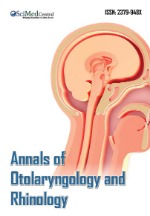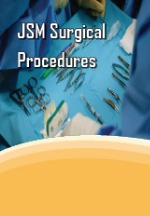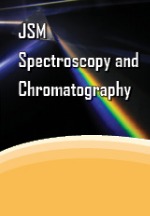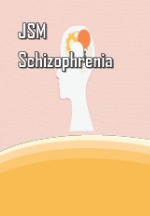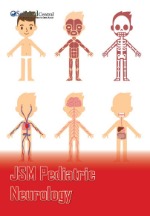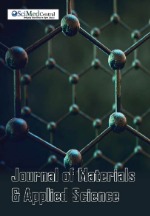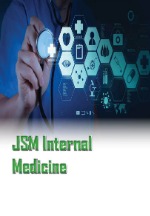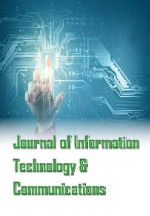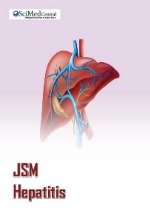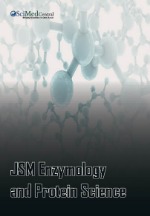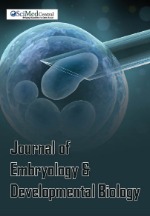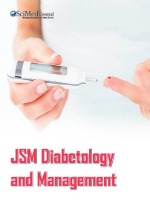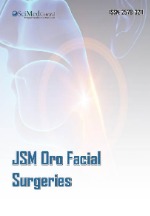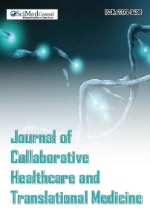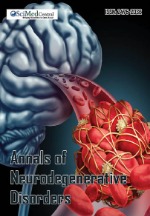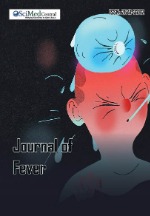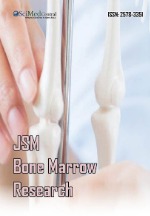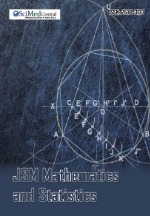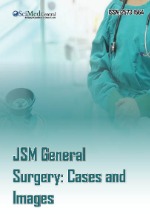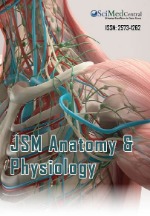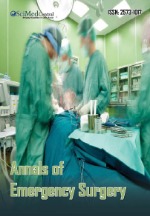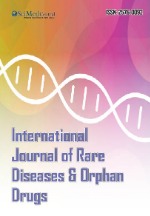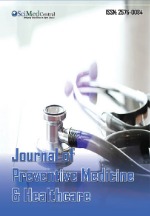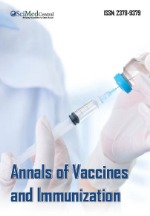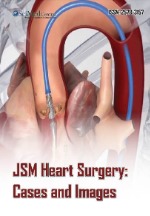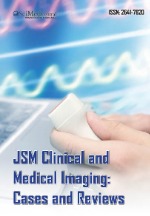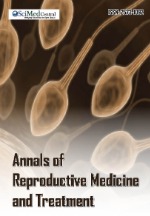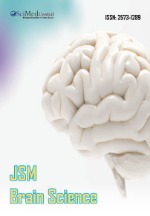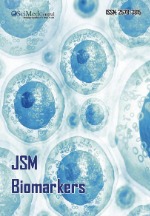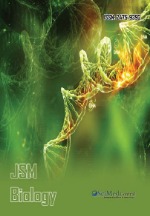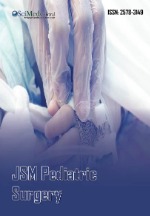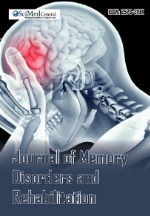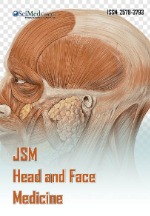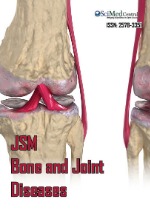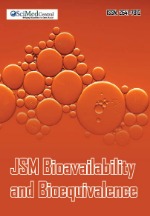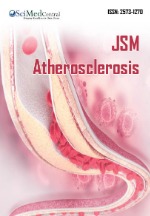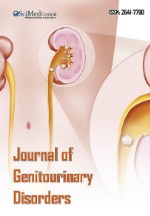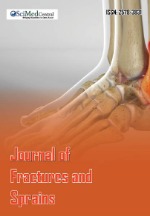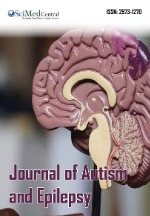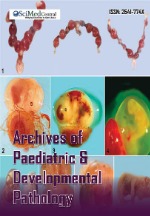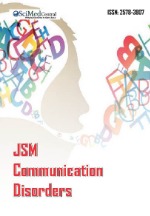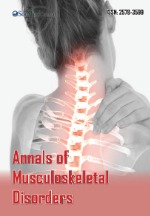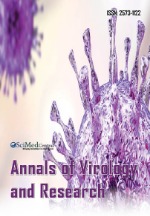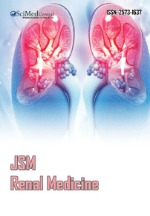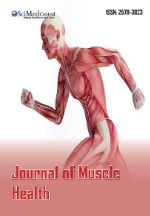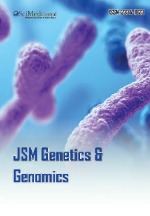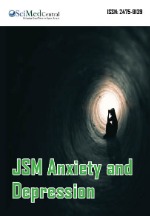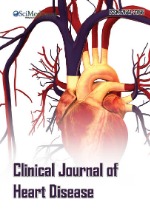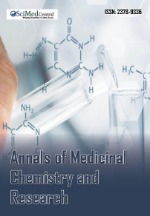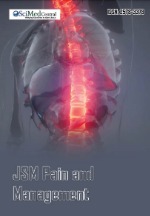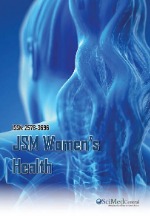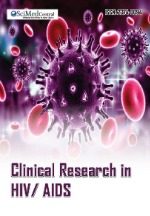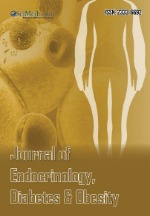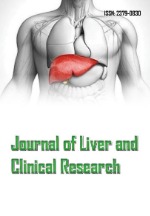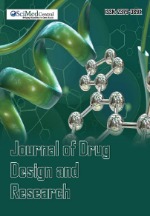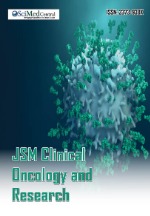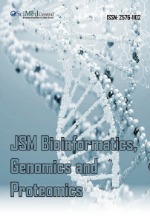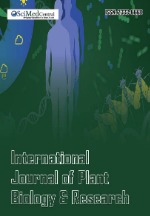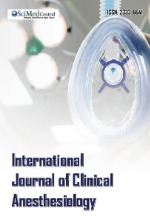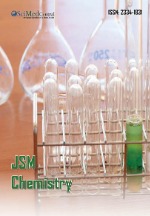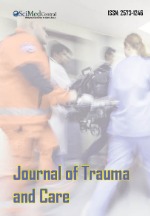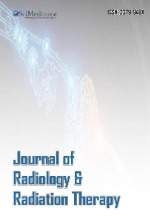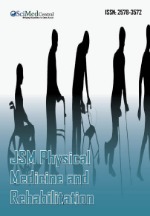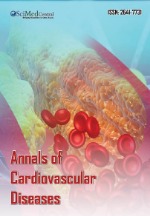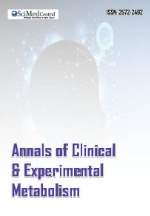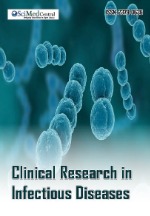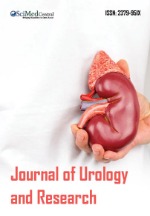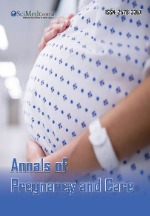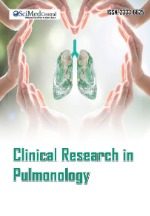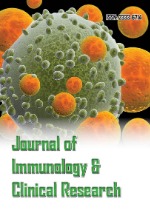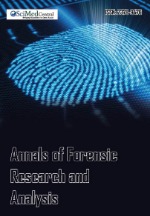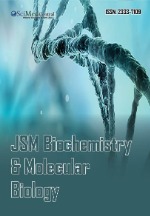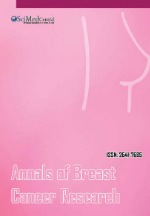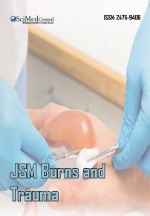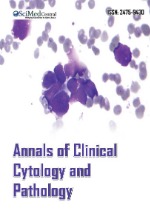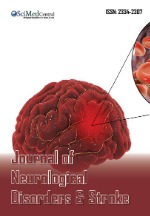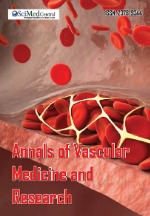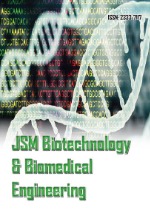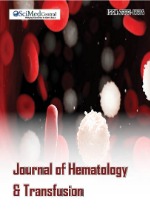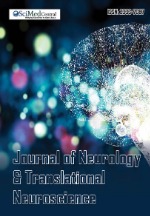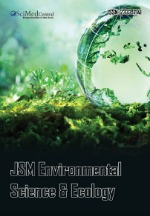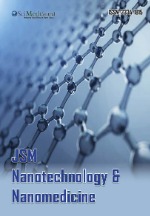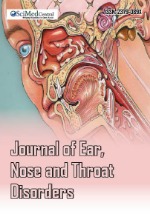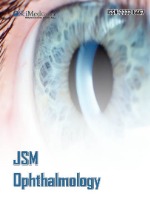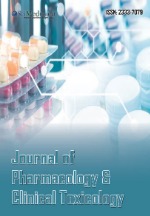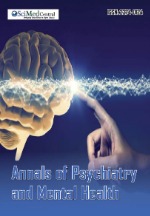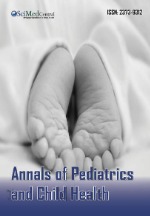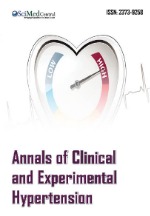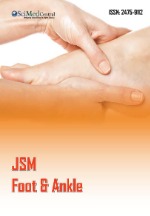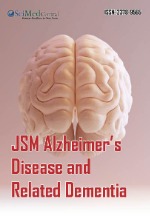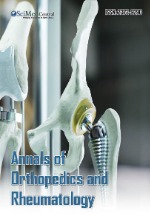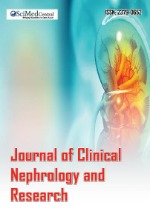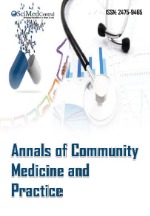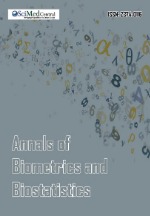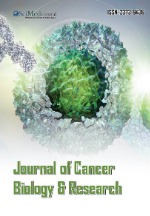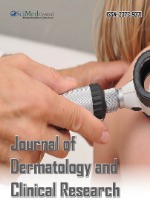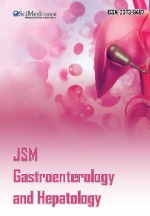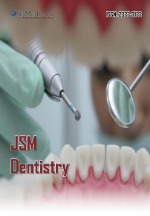Acute Hemiplegia and Facial Palsy 4-Months after Acute Kawasaki Disease in a 31-Month Old Girl
- 1. Pediatric Emergency Department, Alma Mater Studiorum Bologna University, Italy
- 2. Pediatric Radiology Department, Alma Mater Studiorum Bologna University, Italy
- 3. Pediatric Cardiology Department, Alma Mater Studiorum Bologna University, Italy
Abstract
Kawasaki disease (KD) is an acute systemic vasculitis of unknown pathogenesis that affects small and medium-size blood vessels.
Coronary arterial lesions are the best known KD complications but many others are well known and involve various anatomical districts in the acute and sub-acute period of KD. Cerebral infarction revealed by acute neurological manifestations is extremely rare, and till now true stroke events were reported only in the acute or sub-acute stage of patients with KD.
We describe a 31-month-old girl referred to our Paediatric Emergency Unit for the appearance of left hemiplegia and facial palsy 4-months after an acute episode of an uncomplicated KD. Magnetic resonance imaging (MRI) and magnetic resonance angiography (MRA) showed hyperintensity lesions due to cerebral infarction in the absence of thrombosis or aneurysms of medium and large vessels.
Recently, the use of MRI and/or SPECT in KD patients has outlined a great variability in cerebro-vascular involvement showing various degrees of cerebral hypoperfusion, with or without neurological symptoms. Considering the normality of MRA studies in our patient we can assume that the appearance of stroke is due to a progressive degeneration of her small vessels leading to an arteritic complication that was not completely resolved after the previous acute KD illness. In conclusion and in order to prevent long-term arteritic vascular damage, probably anti-platelet therapy should be continued for more than 6 to 8 weeks also in patients without coronary aneurismatic degeneration in the early KD stage.
Keywords
Stroke; Kawasaki disease; Magnetic resonance imaging; Anti-platelets therapy; Child
Citation
Tassinari D, Maretti M, Balsamo C, Bergamaschi R, Carfagnini F (2014) Acute Hemiplegia and Facial Palsy 4-Months after Acute Kawasaki Disease in a 31-Month Old Girl. JSM Clin Case Rep 2(1): 1017.
ABBREVIATIONS
KD: Kawasaki disease; CNS: Central Nervous System; MRI: Magnetic Resonance Imaging; MRA: Magnetic Resonance Angiography; SPECT: Single Brain Photon Emission Computed Tomography; MERS: Mild Encephalitis/Encephalopathy with a reversible splenial lesion; PEU: Paediatric Emergency Unit; ASA: Acetylsalicylic Acid; CT: Computed Tomography; FLAIR: Fluid- Attenuated Inversion Recovery Sequences of MRI; ADC: Apparent Diffusion Coefficient.
INTRODUCTION
Kawasaki disease (KD) is an acute systemic vasculitis of unknown pathogenesis [1,2]. It affects mainly small and mediumsize blood vessels with vascular wall inflammation that disrupts the endothelial destruction/regeneration balance and produces the constitution of transient or permanent stenosis [3]. KD is diagnosed according to various combinations of major and minor clinical criteria [4]. Coronary arterial lesions are the best known KD complications and occur in 15-25% of patients [5-9]. Many other vascular complications of the acute and sub-acute stage of KD are well known and involve various anatomical districts [10]. Acute involvement of the central nervous system (CNS) is also described and increasingly reported in literature (0.4 -3.7%). The most frequently described complications are meningoencephalitis, subdural effusion, cranial nerve
impairment, cerebral hypoperfusion, cerebral ischemia and
infarct with or without neurological manifestations [7,8,10-12].
Recently, the more frequent use of magnetic resonance imaging (MRI), magnetic resonance angiography (MRA) and single brain photon emission computed tomography (SPECT) focused on various acute vascular brain lesions, showing different degrees of localized hypoperfusion and leading to a new clinical/ nradiological syndrome: mild encephalitis encephalopathy with reversible splenial lesion (MERS) [8,9,12]. Cerebral infarction revealed by acute neurological manifestations is extremely rare, and till now there have only been reports of true stroke events in the acute or sub-acute phase of patients with KD [10,13].
In this paper we describe a 31-month-old girl first referred to our Paediatric Emergency Unit (PEU) for an acute and uncomplicated episode of KD. After 4 months and out of antiplatelet therapy, she was admitted again to our PEU for the sudden appearance of neurological manifestations characterized by left hemiplegia and facial palsy, consistent with cerebral ischemia and confirmed by MRI and MRA.
CASE PRESENTATION
A 31-month-old girl was referred for the first time to our Paediatric Emergency Unit (PEU) because of a 4-day fever, skin rash and macroscopic hematuria. At admission she had persistent high fever (38.5°C), cervical adenopathy, pharyngitis with strawberry tongue and diffuse maculopapular eruption, including painful induration of hands and feet.
Finally conjunctival injection, periocular edema, dryness and fissuring of the lips appeared on the 7th day of fever.
Therefore KD was diagnosed and the patient was treated with high doses of immunoglobulin (2 gr/kg as a single dose) and acetylsalicylic acid (ASA) in the anti-inflammatory therapeutic range (80 mg/kg). We did not find any clinical or laboratory cardiovascular involvement and close echocardiografic monitoring did not provide any coronary aneurism either in the acute stage or in the follow-up. Fever gradually disappeared 48-hours after immunoglobulin therapy.
The patient recovered rapidly and was discharged without complications one week later maintaining ASA as anti-platelet therapy (5 mg/kg) for 6 weeks depending on normal cardiological follow-up [4,14].
Three months after ASA withdrawal the patient had a sudden episode of mild upper-airway inflammation and began to show behavioural changes like irritability and inconsolable crying with alternate hypo-reactivity.
After one week she was admitted again to our PEU because of an acute episode of left hemiplegia with homolateral facial palsy. The child was vigilant, reactive and the remaining clinical examinations were normal.
On admission a brain scan computed tomography (CT) was normal. On the 2nd day, magnetic resonance imaging (MRI) was performed and showed normal T1 weighted images. Instead T2 weighted images and fluid-attenuated inversion recovery sequences (FLAIR) showed hyperintensity lesions of the right lenticular nucleus, of the corona radiata and of the posterior limb of the internal capsule (Figure 1).
Figure 1 T2-sequence image: hyperintensity lesions of the right lenticular nucleus, of the corona radiata and of the posterior limb of the internal capsule.
There was also a decrease of the apparent diffusion coefficient MRI (ADC) confirming mainly a cellular citotoxic edema due to ischemic lesions (Figure 2).
Figure 2 Apparent diffusion coefficient (ADC) MRI image: signal decrease due to citotoxic edema in ischemic lesions.
The T2* sequences did not highlight any signs of present or previous haemorrhagic areas. Complementary magnetic resonance angiography sequences (MRA) did not show any thromboembolism or aneurisms of the large and medium size vessels (Figure 3a-3b).
Figure 3 Magnetic resonance angiography (MRA) images: no signs of thromboembolism or aneurisms of the large and medium-size vessels.
Laboratory blood tests showed only a mild increase in the white blood cell count (15’620/mmc) and platelet (450’000/mmc). PCR and coagulation tests including those for thrombophilia were completely normal.
She had no sieroconversion for the principal neurotrophic viruses: Epstein-Barr, herpes simplex, varicella zoster, cytomegalovirus and adenovirus. Electroencephalography and electrocardiography showed no abnormalities.
Echocardiography showed only a patent oval foramen with mild right to left shunt, physiological for age but hemodynamically uninfluential as demonstrated by normal
transcranial rest sonography completed with the Valsalva manoeuvre [15]. No coronary aneurysm was found as in all the previous echocardiographic tests, during the acute and sub-acute phase of KD.
ASA (5 mg/kg/day) was started immediately after MRI results as well as physiotherapy re-education that was started one week after the beginning of symptoms. Neurological evaluation was followed up for four months and the patient improved progressively with complete recovery of her left hemiplegia and facial palsy. An MRI was performed six weeks after strokeonset and showed an increase of the previously described hyperintensity, as in the normal evolution of an ischemic lesion.
DISCUSSION
Cerebral involvement has been increasingly described in the acute and sub-acute phase of KD: the majority of these complications were mainly aseptic meningitis or meningoencephalitis, seizures, chorea, mental confusion, cranial nerve involvement and sensoneurinal hearing loss [8-10,16].
Stroke is a rare event in the paediatric population and is generally associated to drepanocytosis or varicella-zoster infections [14]. KD hemiplegia and facial palsy due to cerebral infarction, documented with MRI images, had rarely been described and always during the acute or sub-acute illness-stage [3,10,14,17].
In literature there is only one late-onset stroke case described six months after KD, starting with chorea due to an ischemic lesion of the caudate nucleus.
MRI and MRA studies showed the complete absence of vascular abnormalities like arterial aneurisms or thrombosis of the greater and medium-sized cerebral vessels [10].
As far as we know, our patient is the first case reported of mlate-onset cerebral ischemia, which started with hemiplegia and facial palsy appeared four months after an acute episode of KD.
Recently, the use of MRI and/or SPECT has outlined a great variability of cerebro-vascular involvement showing various degrees of cerebral hypoperfusion, with or without neurological symptoms [7,8,11].
The clinical evaluation of these hypoperfusion images is intriguing because their appearance has frequently been reported by various authors but with extremely different percentages (from 29% to 72% of total KD patients). These great differences could depend on a younger age, delayed use of gamma-globulin therapy or hyponatriemia respectively [11,18].
These authors stated also that only patients with both positive MRI and SPECT imaging had neurological symptoms. Their main opinion is that the frequent presence of cerebral hypoperfusion in SPECT examinations could be a precocious signal of small vessel arteritic involvement, as already shown by post-mortem histological data in patient with previous KD [8,11,18-21].
Furthermore also other authors have documented persistent in vivo endothelial lesions for an average of at least a 3.3 year interval after an acute KD onset and have concluded that endothelial dysfunction was a pre-arteriosclerotic factor with probably life-long endothelial abnormalities [20,22].
Symptomatic injuries are much lower in cerebral than in other vascular districts (heart, iliac and mesenteric) because brain vessels have fewer connective structures that are mainly involved in the KD inflammatory processes [19,20].
Considering the normality of MRA and in accordance with previous histological studies, we can assume that stroke manifestation in our patient may be due to a progressive degeneration of her small vessels leading to an arteritic complication that was not completely resolved after the previous acute KD illness [7,11,20].
Our patient was not examined with SPECT studies neither in the early stage of her KD illness nor during the stroke event. For this reason, we cannot prove any cerebral lesions due to possible precocious hypoperfusion. To show this arteritic involvement, every patient with acute KD should be examined with SPECT. However an ethical question could arise when young patients, who did not demonstrate any neurological involvement, underwent very serious radiological exposure as in a SPECT study.
At present, the most recent KD treatment guidelines recommend maintaining ASA as anti-platelet therapy for 6 to 8 weeks after the onset of the acute illness in patients without cardiac involvement [4,14].
It is very interesting to note that the course of the acute stage of KD in our patient did not present any clinical complications or coronaric aneurisms and, for this reason, we stopped ASA therapy after six weeks.
In conclusion, it is conceivable that arteritic damage was still persisting and in order to prevent long-term vascular damage, anti-platelet therapy should have been continued for more than 6 to 8 weeks although she had no documented aneurismatic degeneration in her early KD stage.
Until now, there have not been enough clinical studies or case reports to support our opinion but, the appearance of studies with documented cerebral hypoperfusion with or without neurological symptoms, leads us to suggest that anti-platelet therapy should be extended for longer periods of time, also in uncomplicated KD patients.





